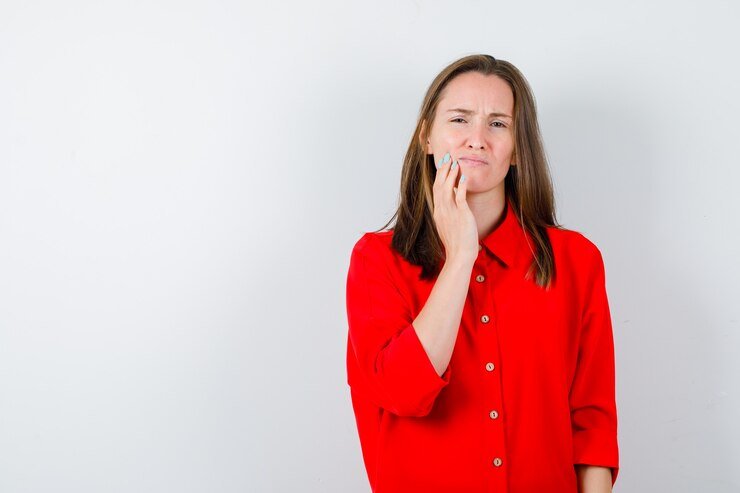Imagine this: you have made it to the dentist for that painful cavity that has been aching you for weeks now. And as the anesthesia wears off, you’d think you’d get some relief, but no! Every sip of water is like taking a sip of ice-cold water and you flinch at the sight or feeling of warm water or even warm beverages. Tooth sensitivity after a filling: it’s more common than you might think. Here’s the reason for this side effect, what you can manage at home, and when you should see your dentist.
Also Read:- What Causes White Stains on Teeth? Easy Explanations
What is a dental filling?
A dental filling is how dentists restore a tooth that has been damaged by decay. Cavities create holes in your teeth. Bacteria penetrate through this hollowed area deeper into the tooth structure. The treatment for this is by the dentist, who will extract the decayed portion of the tooth and then fill the gap with materials such as composite resin (tooth-colored filling), amalgam (a silver-colored mix of metals), gold, or ceramics. Not only does the filling restore the tooth’s appearance and function, but it also seals off the space to keep bacteria out and prevent further decay.
What You Need to Know About Tooth Sensitivity After Filling
It is normal to experience some level of tooth sensitivity after a filling. Most people experience this for a few days to weeks. Why is this?
- Nerve Irritation: During the filling procedure, the nerve inside your tooth may get slightly irritated, especially if the cavity is deep. This can make the tooth more sensitive to temperature changes.
- Pressure Changes: A filling changes the pressure exerted on that tooth. As soon as you bite down it feels a little different. The discomfort is due to this slight difference.
- Adjustment Period: After the filling, your tooth needs some time to adjust to the new material and get accustomed to the changes in pressure.
Though it may be painful, this sensitivity usually subsides as your tooth “settles.” But until it does, there are ways you can ease the discomfort.
Home Remedies to Manage Tooth Sensitivity After Filling
If you’re dealing with tooth sensitivity after a filling, a few simple home remedies can help:
- Salt Water Gargle: An old remedy that can reduce swelling and heal sensitive areas. Because salt has antibacterial properties, it’s an especially good treatment if your gums are tender from the filling. Dissolve a teaspoon of salt in a cup of warm water, swish it around your mouth for 30 seconds then spit it out. You can do this once or twice a day for it to take effect.
- Turmeric: This has anti-inflammatory qualities. Mix a small quantity of turmeric powder in water, gently place the powder around the filled tooth, and leave it for some time before rinsing off using water. Turmeric numbs the pain and soothes the inflammation within and around the tooth.
- Clove Oil: The most common remedy for toothache is clove oil, as it acts as a numbing agent. Apply a small amount of clove oil on a cotton ball and gently apply it along the sensitive tooth; however, be careful with the amount, as clove oil is strong and can cause discomfort if used excessively.
Additional Tips to Ease Tooth Pain
Other than natural remedies, here are some other tips to keep the tooth pain in check after a filling:
- Use Sensitivity Toothpaste: For patients with tooth sensitivity, desensitizing toothpaste is the best. These products contain compounds that block some of the nerve signals between the surface of the tooth and the nerve inside your tooth that causes tooth sensitivity, thus reducing it over time.
- Avoid Extreme Temperatures: Food and drinks that are either too hot or too cold can exacerbate the sensitivity. Use lukewarm food and drinks until your tooth feels normal again.
- Avoid Hard Foods: Chewing on ice, nuts, or hard candy puts a lot of pressure on the filled tooth, which can exacerbate the sensitivity. Try to chew on the opposite side of your mouth until the sensitivity subsides.
- Good Oral Hygiene: If your tooth is still sensitive, it’s good to use a soft-bristled toothbrush so you don’t bother the area any further. Gentle brushing with fluoride toothpaste can also help protect the enamel and reduce sensitivity.
When to see a Dentist
If your sensitivity intensifies, lasts more than a few weeks, or becomes unpleasant, visit your dentist. Persistent tooth pain after filling may suggest that the filling is too high, affecting your bite, or that there is an underlying infection or crack in the tooth that needs attention.
Your dentist will make a few adjustments just as filling down the filling slightly to create a better bite or sometimes re-evaluate the tooth for a deeper problem. With these steps, you’ll feel more comfortable and your filled tooth will soon be back to normal.
Conclusion
Tooth pain or sensitivity might come as a surprise after the filling, but in most cases, it’s just a temporary side effect of the healing process. A little care and a few simple home remedies will help you get rid of the discomfort until your tooth adjusts. However, listen to your body. If the pain persists or worsens, do not hesitate to seek help from your dentist to get further evaluation. Peace of mind is just as important as a pain-free smile!
Frequently Asked Questions (FAQs)
1. Why does my tooth hurt after filling?
After the dentist fills your tooth, you may experience discomfort due to nerve sensitivity or pressure changes. The explanation is that the tooth needs time to adjust to the new filling.
2. How long does sensitivity last after dental filling?
Usually, the level of sensitivity decreases within a few days or over several weeks. Make sure to visit your dentist if it persists beyond these given time frames.
3. Can I prevent tooth sensitivity after a filling?
You can’t always prevent sensitivity, but can reduce the severity by using desensitizing toothpaste, maintaining oral hygiene, and avoiding extreme temperatures.
1. What not to eat after filling?
Avoid very hot or extremely cold food and drink and even hard food. Stick only to soft foods until it feels normal again.

